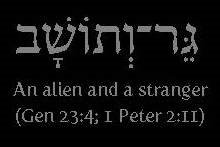Mishnaic Hebrew, in its limited sense, refers to the Hebrew of the Mishnah itself, a relatively early rabbinic work [ca. 200 CE] …. But when we speak of the dialect of Mishnaic Hebrew, we are talking about the living Hebrew language of the first couple of centuries of the Common Era, in other words, the language of Jesus himself.”
“Scholars vary in their opinions as to how fluent Jesus was in the various languages with which he was familiar (Aramaic, Hebrew, and Greek). Most New Testament scholars assume that Aramaic was his mother tongue and that Hebrew was a secondary language. …. Part of the problem is that the best scholarship on the Hebrew of the late Second Temple period is being done at the Hebrew University and is written in modern Hebrew. Only a handful of New Testament scholars could follow this discussion, and I know of none who do. As a result, the case being made for Hebrew as a living language in the first and second centuries CE has gone unnoticed.”
~ Gary A. Anderson, Sin: A History (New Haven, CT: Yale University Press, 2009), 95-6, 215 note 1 (emphasis added)
The book itself is a fascinating analysis of a shift from sin conceived as burden to sin conceived as debt, that ranges across the testaments, through rabbinic literature and Christian Syriac, concluding with a rousing defense of Anselm’s Cur Deus Homo? I wager that only a handful of Old Testament scholars could attempt such a feat.
Back to the topic of Hebrew as a living language during the Second Temple period: My posts on Jesus’ mother tongue from 15 years ago (!) are here:
Jesus' Mother Tongue Part 2: The Supposed Dominance of Aramaic in First Century Galilee


No comments:
Post a Comment